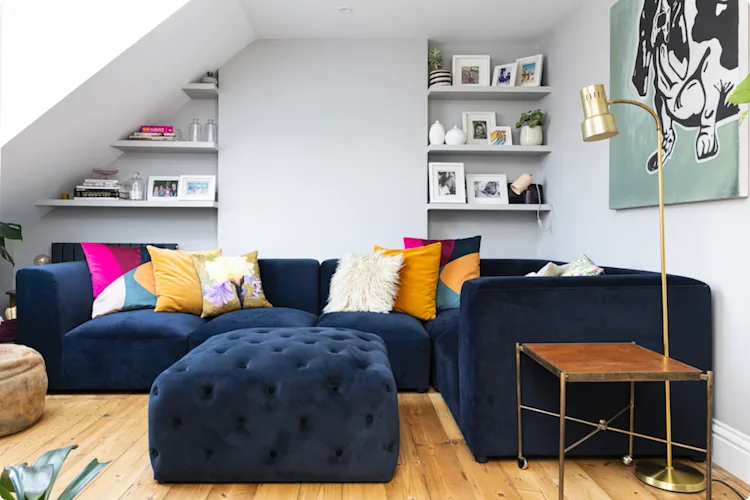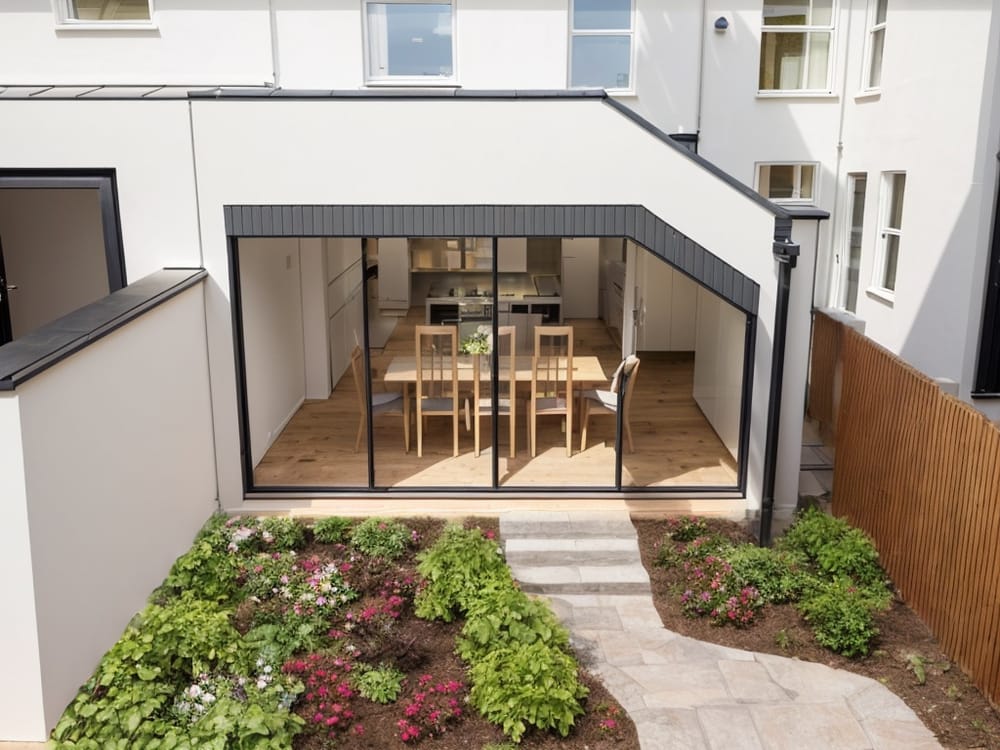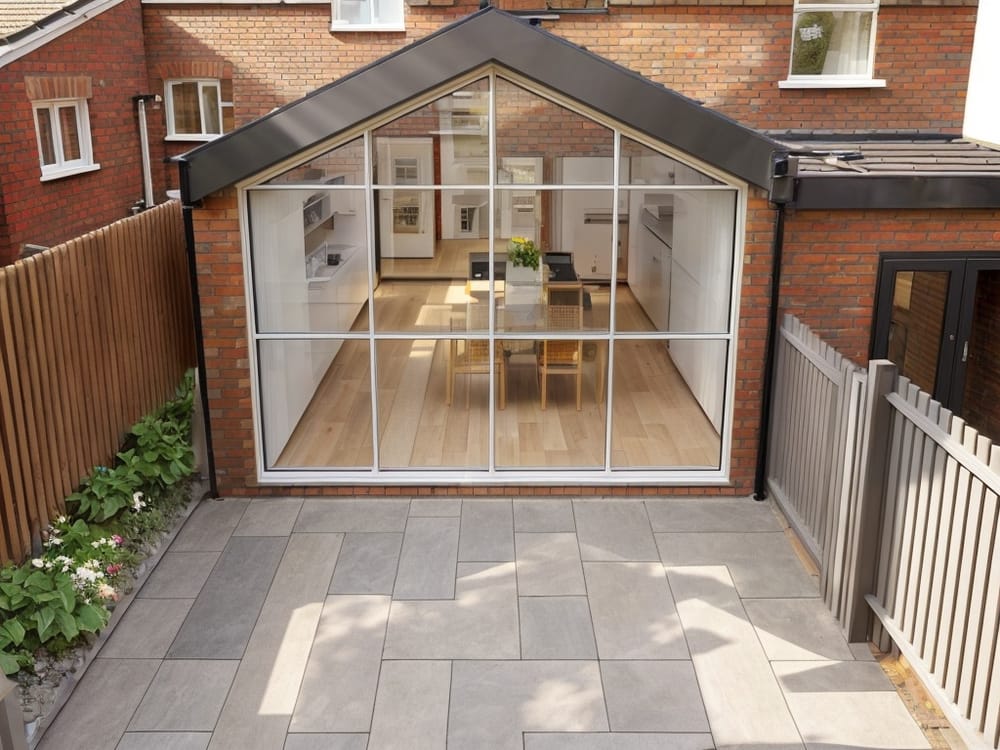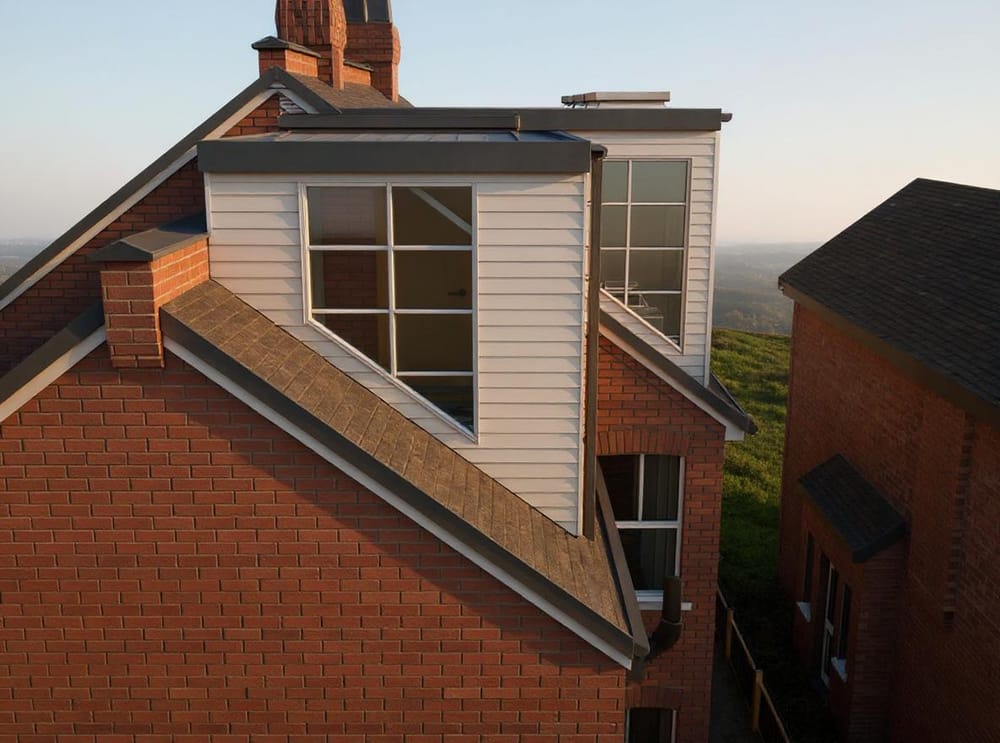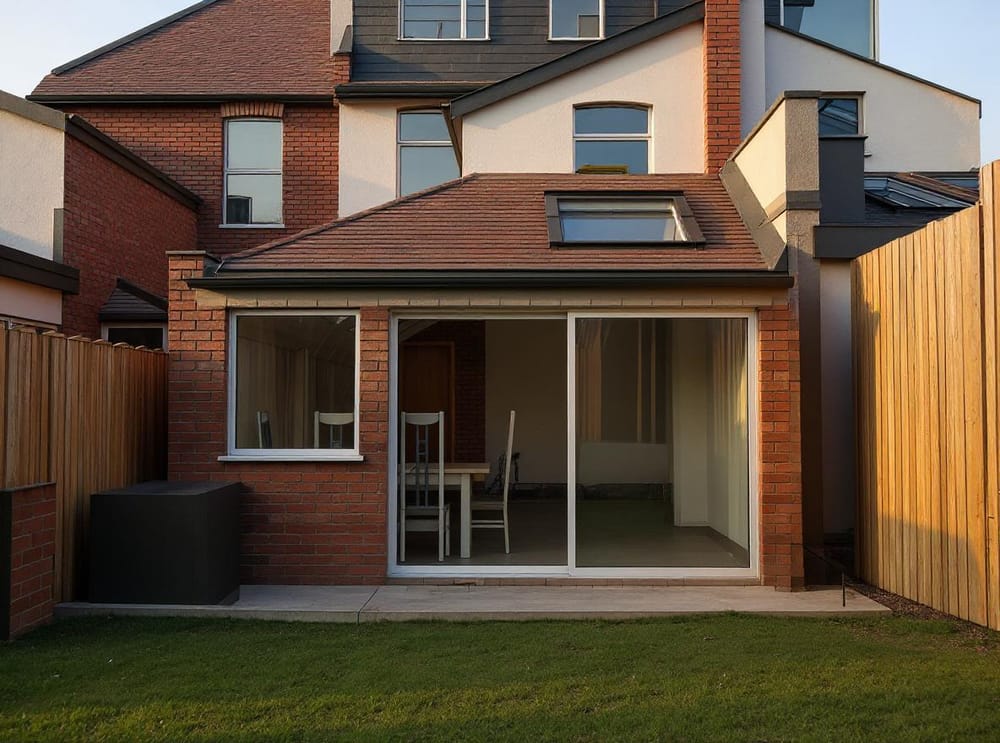Both loft conversions and extensions can create an extra room in your home. However, there are differences between these two constructions and understanding them could be key when deciding what’s possible for your property, how you’d like to renovate your home and what you’d like to get out of it.
What is a loft conversion?
Loft conversions are one of the most popular types of renovation and are relatively cost-effective. They’re a great way of transforming unused space into a livable room such as a guest bedroom or home office space without usually increasing the square footage of the property.
Different types of loft conversions
Loft conversions are often a hugely popular choice because there’s so much opportunity for variation depending on your existing property and the impact that you want the conversion to have. Here are some of the most popular types of loft conversions:
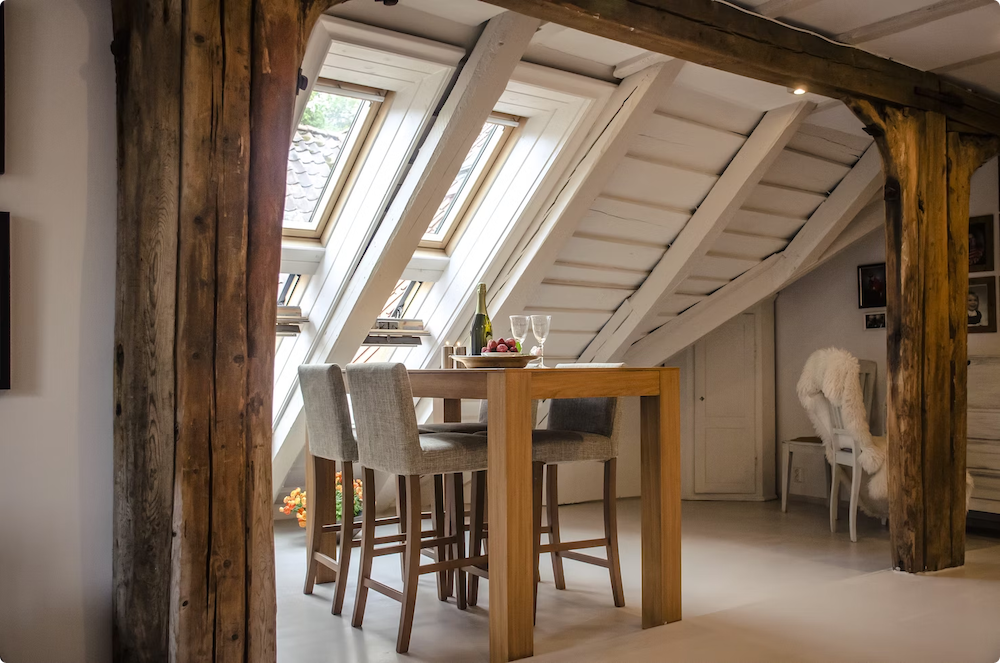
Rooflight loft conversion
A rooflight loft conversion is one of the most popular choices if you’re looking to transform your attic space. One of the key factors of this type of conversion is that they don’t extend the available space within your property – rather, it’s a renovation within the existing outline of the roof that has skylights installed to let in natural light. Because it doesn’t offer an extension of the space, rooflight loft conversions tend to be cheaper than some other types of loft conversions.
If you live in a Conservation Area, a rooflight loft conversion may be the most suitable type of renovation available for your property because they don’t impact the outer appearance of the property. However, each Conservation Area and Local Planning Authority (LPA) have a unique set of rules so it’s worth getting to know the specificities for you to work within. Book a free advice call with our experienced Planning Team – they can lead you from the big idea to the how-tos of loft conversions and planning permissions in your area.
Dormer loft conversion
Dormer loft conversions essentially add a box-like structure to the top of your property that extends out from the existing roof. This type of loft conversion tends to be incredibly popular because it offers up the option of added space and headroom, as well as the option for regular windows to let in natural light. This type of conversion comes in a range of styles itself. Here’s a quick run-through of the variations:
- Flat roof: this is when the ‘box’ structure that extends out of the roof of your property has a flat roof.
- Shed roof: in this circumstance, the ‘box’ structure has a flat roof that slopes downwards.
- Dog-house: this type of dormer roof takes its name from traditional ‘dog houses’, more often seen in cartoons. The structure has two sloping sides that meet in a peak in the middle to form a triangle shape.
- Hipped roof: this is similar in style to a dog-house dormer, but with one extra side.
- L-shaped: this is when two dormers are built together and conjoined to build an L-shape where they extend from the property.
This type of renovation also usually falls under Permitted Development, meaning that there shouldn’t be too much red tape to cut through to get your work approved and actioned. That being said, it’s always worth doing the research and making sure that your property falls within this category. Book a free advice call with one of our Consultants to discuss whether this type of conversion could be suitable for your property.
What is an extension?
There are a number of different types of extension – rear, side infill, wraparound – that can increase the square footage of a property. Read our deep dive into all the various types of extension to get a detailed view of the pros, cons, costs and considerations for each are.
Find out how much each different type of extension could set you back with our Quick Cost Calculator.
Hip-to-gable loft conversion
Hip-to-gable loft conversions are a fantastic option for anyone with unused attic space in need of extra room, whether that’s to build an extra bedroom or set up a new home office. They’re built by straightening the inward slanted walls of an existing loft to create a vertical wall. This has the effect of maximising the loft’s floor and height area – a great option if you’re looking to significantly increase the available space in your home.
Mansard conversion
A mansard loft conversion is made to blend with the existing property with a horizontal roof. While they’re typically built to the rear of properties, if you really want to maximise the space, you could opt for them on both the front and the back. While this type of loft conversion offers the benefit of significant extra space, it can be tricky to obtain and often requires Planning Permission.
Which is better for my home?
The type of renovation that works best for your home will depend on a number of factors including, but not limited to, the structural integrity of your property, whether your property is subject to strict planning permission and the amount of space you’re hoping to gain. We run through the biggest factors to consider when deciding between a loft conversion or an extension.
Cost
First things first, loft conversions tend to be cheaper to carry out than extensions in general which can make them a more alluring prospect if you’re on a budget or if you’re planning on gradually renovating various areas of your home gradually. However, due to the individual nature of each property and project, there’s no guarantee.
Added value
According to experts at Zoopla, having a loft conversion that adds an extra room to your property can boost its value by around 15%. Other types of extensions add various different values to properties. There’s no one-size-fits-all approach so our best advice would be to speak to one of our knowledgeable consultants or try our Quick Quote Calculator to see how much a loft conversion or extension could set you back. Keep the potential cost of the project in mind and contrast it against the additional value it could add to your property. Use this guide as a roadmap to outline how much value each type of extension could add to your property or explore Zoopla’s guide to the best ways to boost your property’s value.
Type of property
Considering the nature of loft conversions, it should go without saying that this type of home renovation is of course only suited to properties which have unused loft space available. If you do have spare attic space, there are various loft conversions that are suitable whether you have a terraced, semi-detached or detached property.
If you live in a ground floor flat or are limited by certain building restrictions, other types of extensions such as side infills and rear extensions may be a better way of creating more inside space.
Planning permission
We’ve touched on this previously but it’s really worth getting to know the sort of work that you’re allowed to carry out under Permitted Development depending on the type of property you own, where it’s located (e.g. do you live in a Conservation Area?) and how drastic the changes you’re looking to make are. Contact your Local Planning Authority for more insight into how these considerations may affect your home renovation project or book a free advice call with one of our Planning experts.
Disruption and time to build
In general, loft conversions tend to be the less disruptive option than building an alternative type of extension. This is particularly true when it comes to a relatively simple loft project that isn’t extending the inside space, just reimagining it. If all goes according to plan, some of these types of conversion can take as little as four weeks to complete – making it a fantastic option if you’re looking to free up extra space in a hurry.
In terms of the different types of extensions available, they will each vary significantly depending on their size, the materials used and how many professionals are working on the project at once. There are no guarantees so to get more insight, book a free advice call to talk through your big ideas.

